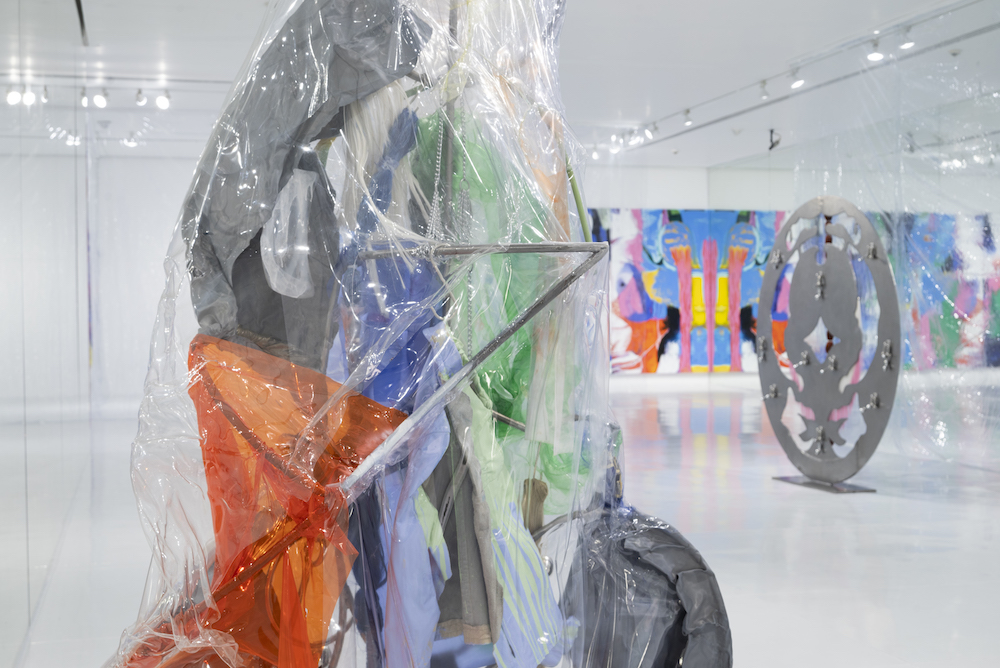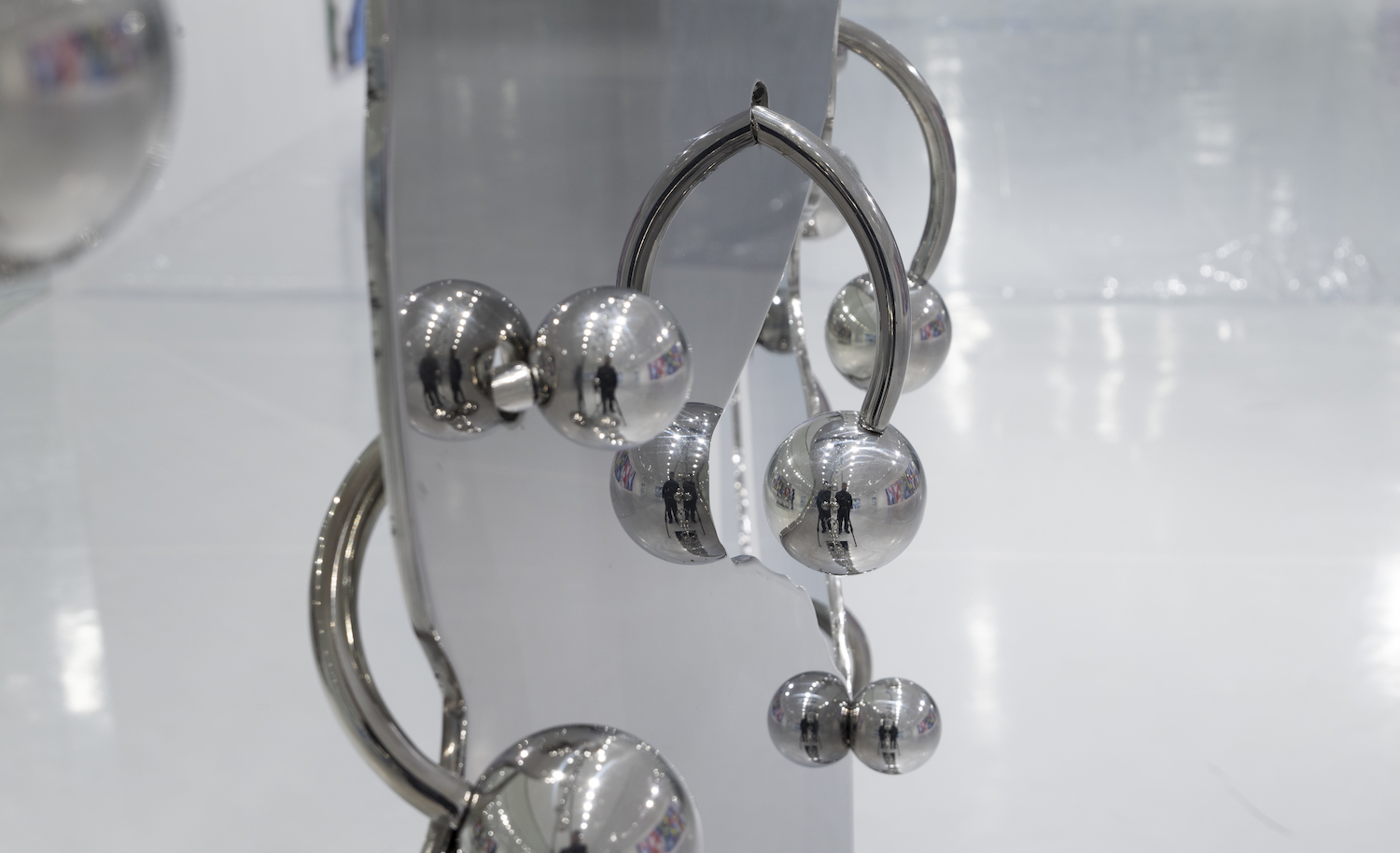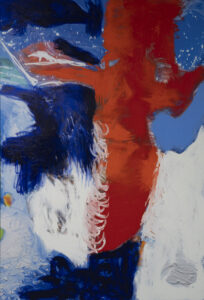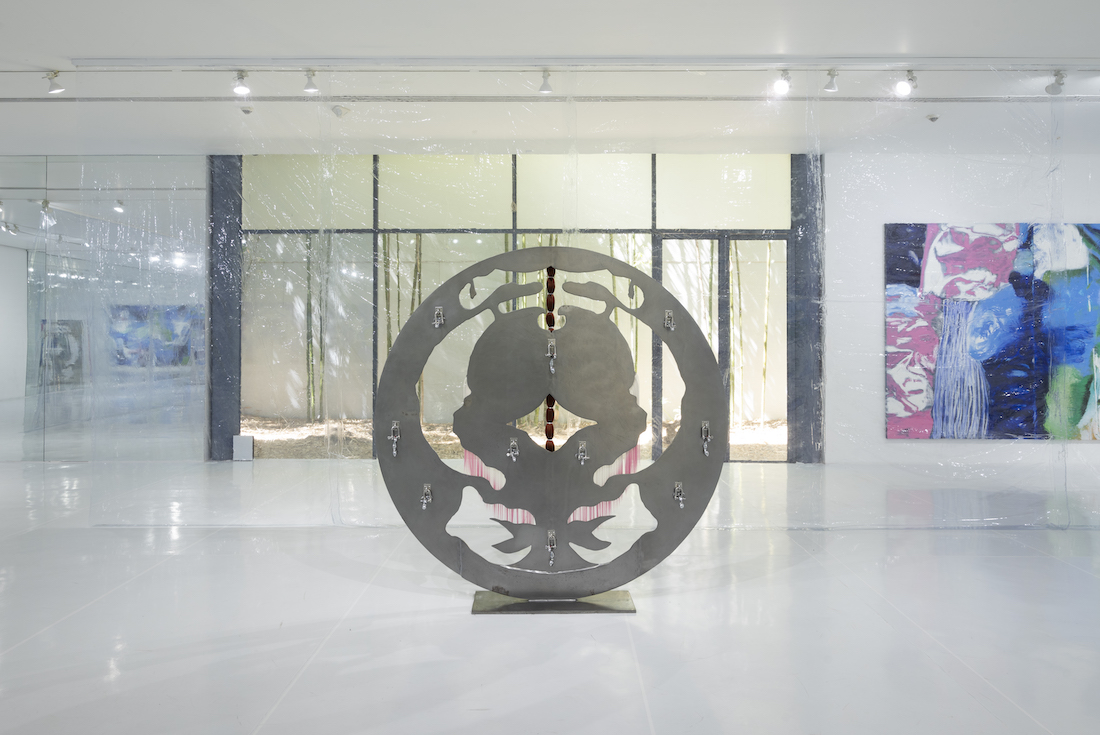
17.08.2023
We invited independent curator, researcher and educator Mayra Vineya to write about artist Donna Huanca’s most recent exhibition at the MAZ in Zapopan, Jalisco.
By Mayra Vineya
Is the skin what protects us from the other? Or is it rather, what connects us from our boundaries with that which approaches us?
The eyes are made of layers: the first, is in contact with the wind and the environment, is a white, opaque and soft layer, with a transparent and thin dome-shaped bulge. Beneath it an interlayer, colored with an opening down the center that expands and contracts. Finally, at the bottom, the inner layer: the retina. The first contact with the eyeball and the last with the world; it is here where the recording of visual information in the brain happens, where we begin a translation of all the external stimuli that need to be explained.

In this exhibition, these spheres of cells become spheres of igneous rock, which have undergone explosions and cooling. Ojos Obsidianos, presented at the Zapopan Art Museum from February 4 to July 16, was introduced as an immersive exhibit, a large skin that expands around the room in spatial games in which the limits of the wall that separates and reflects our own image are diluted.
More than an architectural covering, it seems to envelop us in new territories where the limits between walls and floor are lost. In connection with the important tradition of obsidian use in Teuchitlan, Jalisco, Ojos Obsidianos brings together spaces with transparencies and mirrors. Seeing through the layer to find ourselves in the end in a blurry reflection that, just as it projects ourselves, could be anyone. But what it reflects is also a protective object, an amulet-shield in the midst of the vulnerability of these spaces.
The arrowheads found in Jalisco are abundant; any cutting object can be made with this material. Obsidian was used in all types of activities: domestic, medicinal, craft, military and religious, due to its sharp and uniform edges. But I think of other types of objects: obsidian eccentrics, so called because of their whimsical shapes and the apparent uselessness of their existence. An object with no particular use that we associate with rituals because it does not fit into a utilitarian view. These objects are made to accompany; they mix human forms with those of gods and animals that come together and interconnect.

The spaces that Huanca displays are explorations of the self, of one’s own skin and alongside this collective self. Two different selves that touch each other and coexist for a moment. The skins converse with the space they inhabit because they are the space. From its architectural presence, the role of the plastic that fragments the room to achieve layers is important. An assembly of layers that guard the bodies that inhabit it but are, at the same time, a nod to asepsis, to hospital settings; all this reaches our mind also through smell.
The exhibition presents a series of aromas intentionally placed to accompany our journey, which begins with minimal textual mediation. The texts in the room are carefully and subtly placed on glass like a map on a window, in which, even if we pay attention to the indications, it is only the introduction of what is presented to us from its material qualities.

All the pieces are interconnected and are a consequence of each other in a horizontal sense; the polyptychs of mural dimensions are photographs of the performances in which nails and diffuse body parts of the models appear during these exercises. Their plastic qualities invite us to get closer, to observe in detail the brightness of an always fresh material, whose drying time does not seem to fit with our observation time. The materials, derived from makeup, are used once again as a prosthesis of the body-face, to cover some parts, but also to reveal others hidden in the generality of an enlarged image.
Huanca’s sculptures are presented as totems, not for worship but for protection. At other times, these were micro-ecosystems and shelters for the models, women who inhabited and who make themselves present from the microscopic level; a residue of themselves. In the totems, the aroma persists, the skin particles, the traces of presence. One of them operates as an abstraction of the models in the form of objects: their clothes, props, extensions of them that work as an exercise to bring them to the site.
Some of the most valued objects in the Zona Valles are bracelets, chokers, necklace beads made of obsidian with a technology that is unique in Mesoamerica, all of them body prostheses which, more than adorning, provide attributes and protection skills to those who wear them; they make them safe. In the show, this series of interconnected sculptures works in the same way. Like prosthetic devices; nods to objects of sexual and corporal exploration. From the one that is made to be inserted, to the one that adorns and the one that records and amplifies. The electroencephalogram is displayed as a body within a record of itself. The piercings, metals in the body, accompany it as parts of a whole.
The artist seeks to touch her Bolivian origins within her explorations; Andean cultures understand belonging, family, kinship, in relation to territory. Those who inhabit the common spaces will also be those to whom we owe familiarity. However, in this exploration or look at the origin, there is no obligation to adhere to these postulates. It is at this crossing of cultures where obsidian crosses seemingly dystopian worlds during the conquest; it is first used to replace scarce European metals and to help this rite, already considered pagan, to persist. In what is perhaps a mirror exercise, the sculptural metals are presented here as a nod to the glass rock, a rite to return its memory.

The obsidian eyes and their conduit of information from the world extend and slide from the arms to the tips of the fingers, but these eyes do not end in the skin; the skin, an extensive organ, becomes multiple skins that go beyond you and I, possibilities of multiplicity of oneself.
We cannot speak of a universalization of skin and barriers; however, the labyrinth that this exhibition becomes extends to us the corporality of the others that cross the mirror to step on the footprints that are earth, cuts and caresses.
23.03.2024
Opinion Cartografía sentimental de la brutalización en curso Argentina, Latinoamérica
Duen Sacchi
22.03.2024
Marginalia
(Español) La Revuelta
08.03.2024
Opinion
María Galindo
Comments
There are no coments available.